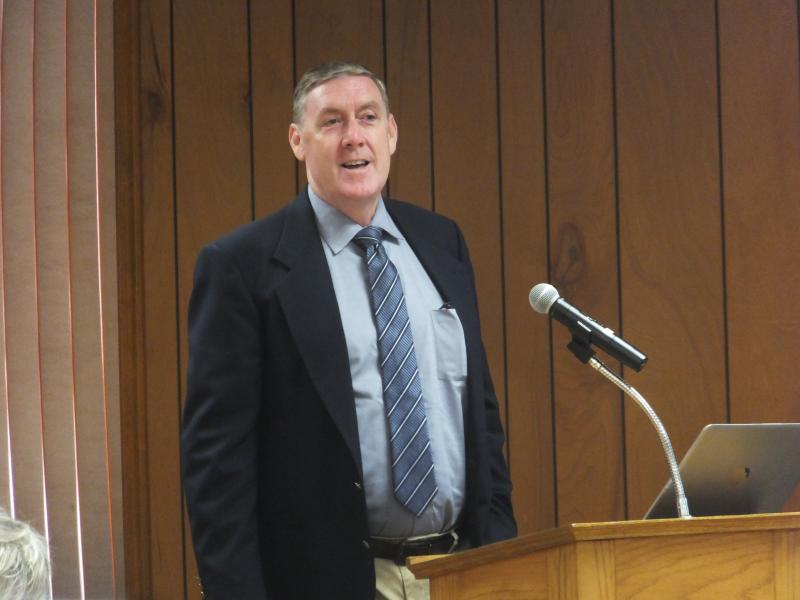Construction on Rehoboth Beach’s ocean outfall project is underway, but before shovels hit the ground, Mayor Paul Kuhns said the city has already spent about $2.7 million.
Kuhns said those expenses have mainly been for project engineering. As the city starts to move forward on the $52.5 million project, Kuhns said invoices will start rolling in.
To help pay for the project and prepare citizens for higher user fees that would be in effect once the outfall was operational, the city applied incremental surcharges on sewer bills, a practice that has been going on since 2008. Kuhns says the city has $900,000 left over from those surcharges to help pay for the project.
Jeff Sturdevant, project manager for engineer GHD, said GHD and outfall contractor Manson Construction of Seattle have been working on a change order that would reduce costs. Sturdevant said instead of using stone to cover pipe laid on the ocean floor, they recommend what he called a concrete mattress, a product used in sea pipeline construction. The mats typically consist of polypropylene rope laid into form with concrete poured over top, making the mats flexible. Mats come in varying lengths and thicknesses. Sturdevant said the mat recommended for Rehoboth would be 8 feet wide and 20 feet long.
Sturdevant said mats would be more cost-effective and faster to install than filling the pipe trench with rock, and could save the city $1.2 million. He said the proposed change will be submitted to state regulatory agencies for approval, and Sussex County officials are also aware of the proposal.
“We think it’s a great opportunity for the city to save some money on this project,” Sturdevant said.
He said the main area where the city would see savings is in the number of barges in the area where the outfall will be installed.
Stormwater study continues
Sturdevant said GHD is also continuing to collect data on bacteria in the city’s stormwater outfall system, with five outfalls that empty into the ocean. He said GHD’s intention was to leave samplers out until there is significant dropoff in bacteria levels.
Rehoboth was required to study its stormwater outflow into the ocean as part of Delaware Department of Natural Resources and Environmental Control’s approval of the city’s environmental impact statement on the project.
GHD previously developed models for the impact of bacteria from stormwater in the ocean. Sturdevant said estimated improvements would cost about $15 million. But the firm wanted more data, so samplers were near Lake Gerar and the Boardwalk during the summer to collect stormwater and then analyze the water for bacteria. Sturdevant said GHD has received good data so far with 120 samples from six storms.
























































